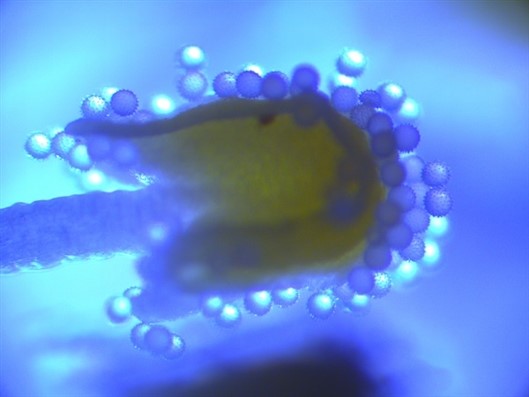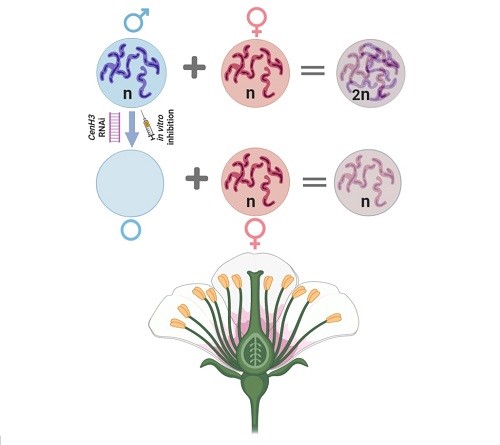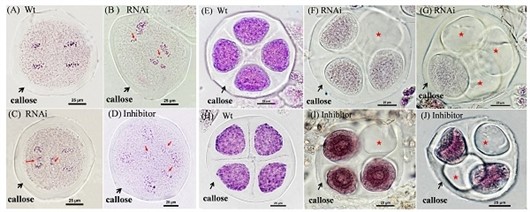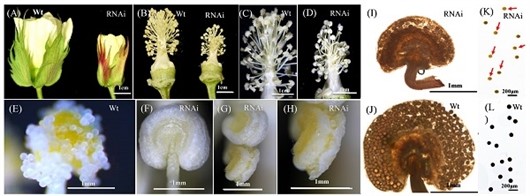
Stamen anther loose powder close-up of cotton at full flowering stage
On June 17th, iScience, a sub-journal of Cell, published the latest research progress of Zeng Fanchang research team of Shandong Agricultural University. Using cotton as a model material, they analyzed the cellular biological basis of plant apomixis and the regulation of seed haploid induction and regulation, and revealed the virtual sexual reproduction mediated by pseudo-fertilization in the process of plant sexual reproduction for the first time in this field. The virtual sexual reproduction induced the process of apomixis parthenogenesis, which led to the formation of seed haploid.

Pattern of haploid formation of apomixis seeds mediated by crop pseudo-fertilization
This result provides an innovative theoretical basis for analyzing the haploid induction process and cell biology basis of apomixis in cotton and other crops. According to Zeng Fanchang, the author of the paper, haploid can fully show the type of recombined gametes on the plant, eliminate explicit and recessive interference, improve the accuracy of selection, rapidly synthesize new breeding materials, enrich genetic resources, shorten the breeding cycle and then significantly improve the efficiency of breeding.

Creation of male pseudo gametes by in vitro inhibitors and gene interference techniques to subtract chromosomes
Seed haploid of apomixis is a universal and common way of occurrence, which is an innovative method of crop genetics and breeding and germplasm resources, and has important application potential and prospect. However, in the process of haploid induction and application of crop series, the haploid induction frequency is too low, and the induction technology has considerable randomness and blindness, which can not fundamentally regulate and induce haploid production efficiently and accurately. This limits the application of seed haploid of apomixis in breeding to a great extent.

Male fertility phenotype of plants after genetic engineering interference with chromosome subtraction-related genes
On the basis of screening a series of related chemical inhibitors and inducing effects in vitro, the classical centromeric histone gene CenH3, combined with gene interference technique, identified the dose effect of induced pseudo gametes in plant bisexual sexual reproduction in vivo and in vitro, and verified pseudo-sexual reproduction mediated by pseudo-fertilization, inducing parthenogenetic reproduction and seed haploid formation.
Researchers subtracted the classical centromere histone gene CenH3 on chromosomes, screened a series of related chemical inhibitors and their induction effects in vitro, and used the gene interference technique to identify in vivo and in vitro the dose effect of induced pseudo gamete during sexual reproduction of hermaphroditic flowers in plants.

 Chinese
Chinese